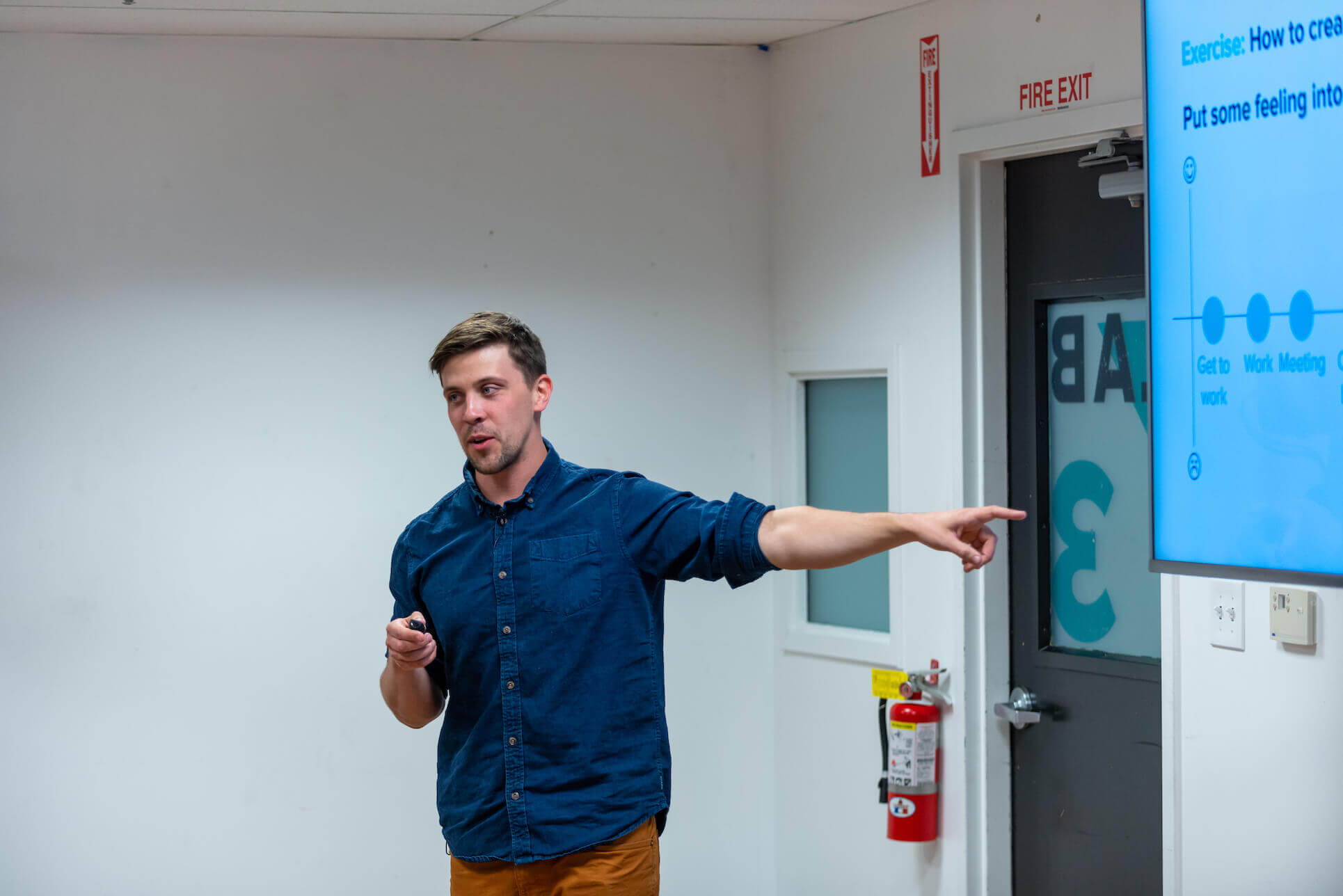“We make products prettier when we could be solving customer’s needs and generating real value.” – Braden Kowitz
We couldn’t agree more with Braden Kotwitz’s perspective on designers.
Product managers often find themselves at the intersection of business and engineering, wondering if it’s coding skills or an MBA that would make them better at their job. Naturally, design gets ignored amongst those debates.
In the past, the role of design was to beautify something. The function was responsible for adding trendy colors and over-the-top flair. We saw design as the finishing touch to a product, wrapping it in a bow for consumers.
But today’s designers aren’t just fixated on how to attract attention to or improve something’s appearance. Instead, they’re transforming products with a framework called design thinking. This idea puts human issues at the forefront of every design decision.
With this in mind, we better understand how design is absolutely crucial in product. It dictates how the product attracts attention, is experienced, and then remembered. At the inaugural ProductCraft Conference, we invited Yuri Zaitsev of Stanford University to conduct a lab for product people about design thinking.
Design Thinking and the Healthcare Industry
During his ProductCraft session, Zaitsev shared an example of how design thinking has affected the healthcare industry.
When it comes to hospitals, lab tests, or health in general, people naturally feel a sense of fear and discomfort. These are typically weighted experiences, and the environments — sterile empty rooms, fluorescent lights, lack character — don’t exactly put any visitor’s mind at ease either.
Designer Doug Dietz felt that MRI scanners only added to that uneasy sentiment. They were composed of metal beds placed into a brick-shaped machine that not only made loud noises but required patients to stay completely still for long periods of time.
In fact, doctors have to sedate 80% of children in order for them to be scanned.
So, Doug mapped out the journey of a child to the hospital. From their initial visit to the day of the scan, to them entering the machine and the follow-up. He used journey mapping to frame the problem, take action, and ask the right questions. Doug understood the medical experience from a child’s perspective and consulted various professionals on how to mitigate their trauma.
What if he could design an experience that relied on a child’s imagination for the better? What if instead of a metal bed inside a machine, he could design it to be a yellow submarine where the loud noises were muffled by a gentle soothing harp? Or an adventure where they laid down on rocketship that was preparing to launch into space?
The impact of his innovative design was huge. Patient satisfaction scores rose to 90%. Doctors were no longer having to conduct repeat tests because scared children were moving. Kids had less trauma associated with the machines. Some had even asked their parents if they could come back again.
The Lab
At the ProductCraft Conference, we wanted to change up the traditional product event format. Rather than having attendees sit in a room for a lecture, we opted for hands-on, collaborative experiences: labs. Zaitsev walked us through a lab that would help us implement design thinking.
In order to create unique solutions that delight customers, product managers have to move beyond their traditional mindset.

Activating design thinking can help. Consider how customers experience your product and what design aspects you can optimize. Product managers might have the tendency to come up with quick fixes instead of lasting, unique solutions. But how do you start training your mind to think beyond that?
Zaitsev provided an exercise. During the lab, he asked us to list the functions a paperclip could possibly have. We all brainstormed in silence, jotting down whatever came to mind, and then we shared our thoughts. Many people said paperclips could serve as jewelry, smartphone props, wire sculptures, etc. We thought we had said whatever our imagination could invent, but Zaitsev thought otherwise.
The room had been silent during the exercise. Zaitsev never explicitly stated the weight and height of the paperclip. We missed two opportunities. As participants, we didn’t think about collaborating with each other to bounce ideas off, nor did we think about adjusting the size of the paperclip. We thought our original ideas had been creative, but we were still constrained by our assumptions.
With that, Zaitsev reminded us to break the schema. We should question our limitations, and break our own assumptions of what we think is possible.
Design Thinking and Product Management
When it comes to your product, design should be a key stakeholder. It’s how customers experience your product. Product managers need to be collaborating with product design earlier in the process, and work together to optimize the product for customer delight.
However, design thinking also challenges product to break free of conventional solutions and venture somewhere no one else has.
It starts with a trait that all product managers need to be familiar with: empathy. Design thinking generates lasting and impactful solutions for people. This framework encourages product teams to weave together human needs, as well as what is technologically and economically possible, into a beautiful and functional experience.

